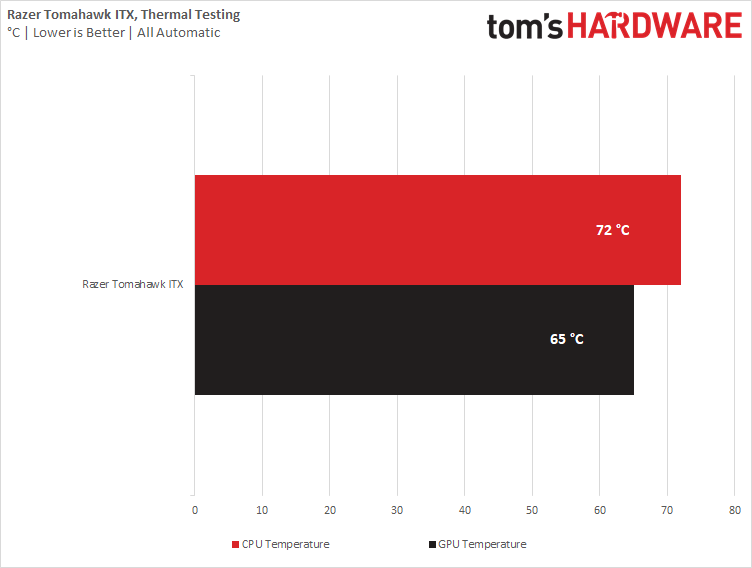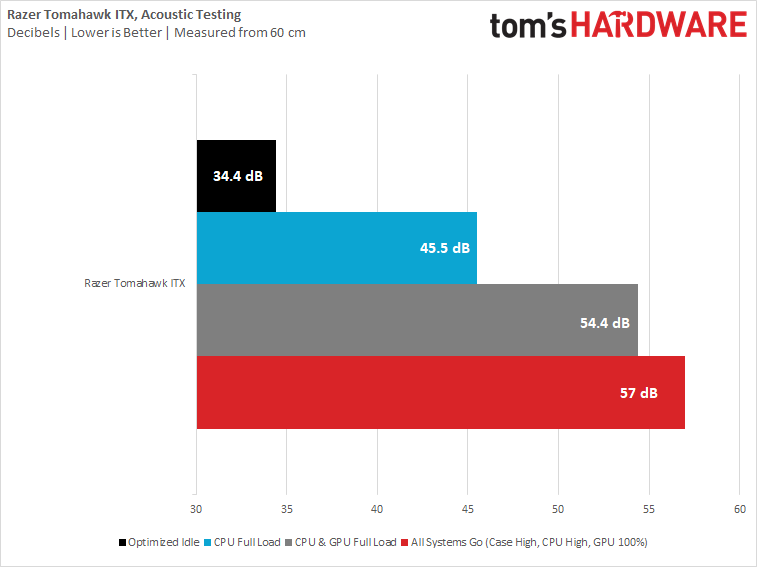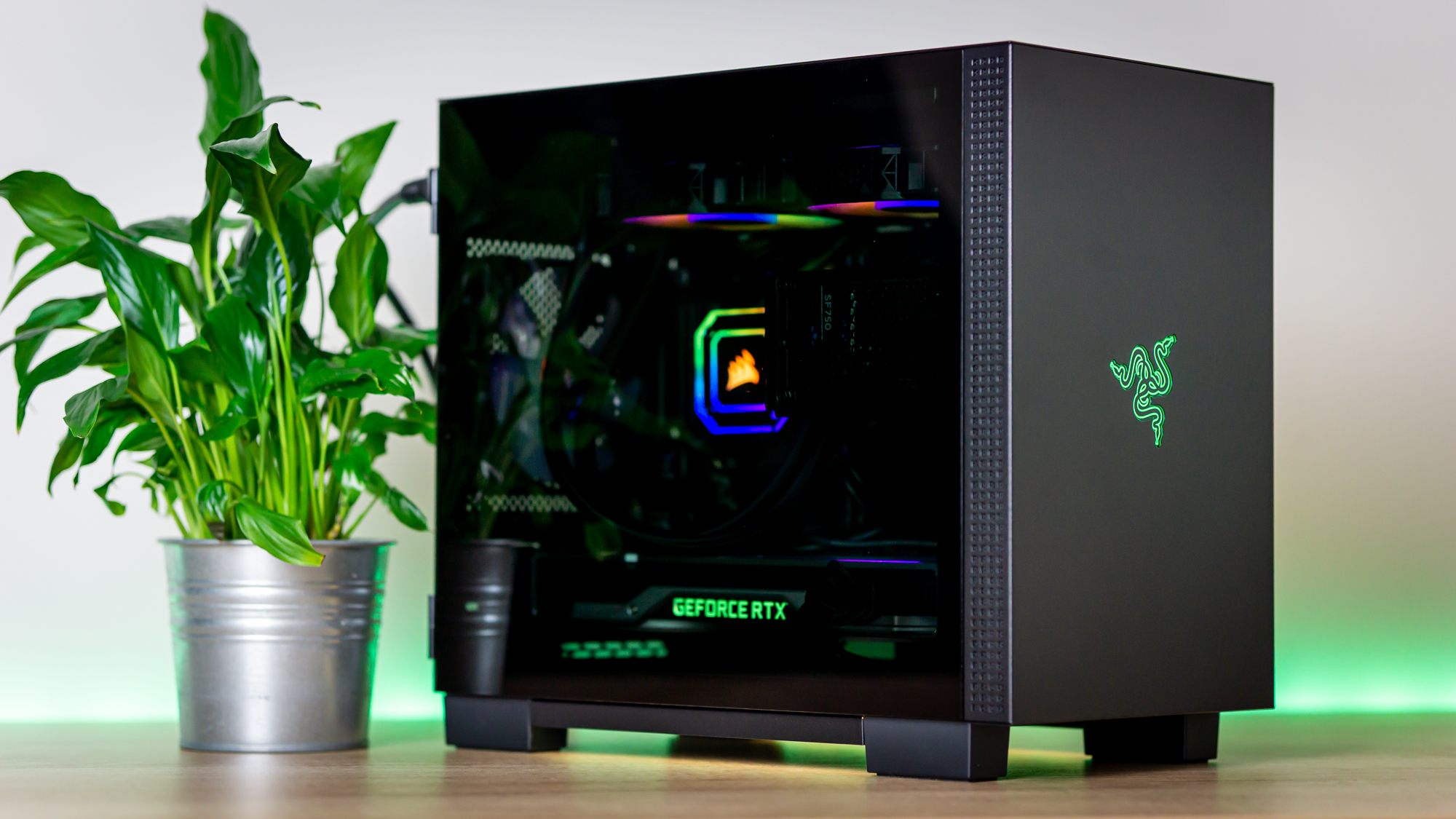Why you can trust Tom's Hardware
Testing
But of course, as good as a case might look, performance also matters. So it was time to give the Tomahawk ITX some grief. To test the chassis, I subjected the system to Prime95 workload at smallest FFT’s on the CPU for maximum heat generation, as well as Furmark to get the GPU nice and warm.
There’s no way to test the included fans as, well, the Tomahawk ITX doesn’t have any. Therefore, I set the AIO and the case fans I used to Corsair’s ‘Balanced’ profile, as it won’t let you regulate speeds in any more specific fashion. I let the GPU take care of its own fan speeds. No overclocking was applied, and as a result, this represented a real-world out-of-the box setup, other than the heavy synthetic workload. The room was at 24 °C for this test.

Thermally, the Tomahawk ITX jotted turned in solid performance. The CPU ran at just 69 °C if tested by itself, and it ran at 72 °C when the GPU was added to the mix. The GPU, meanwhile, sat at just 65 °C, which is very impressive indeed. Of course, that’s the benefit of an open bottom fresh air intake that is unhindered by an air filter. Regardless, these are good numbers especially given the warm room temperature.

Acoustically, things got quite a bit louder when cranked up. The system was quiet in idle operation, and only putting a load on the CPU elevated noise levels, but it was bearable. Add the GPU to the mix, and the noise levels start to get rather obtrusive. But our thermal load runs Prime95 and Furmark at the same time – actual gaming workloads won’t be as merciless and will fall somewhere between the CPU only and GPU & CPU together for noise levels.
For reference, I also set the fans, pump, and GPU fan speed to maximum speed. This was unbearably loud, but no real-life workload ever needs to address these levels. Pick quiet components, optimize the fan curves a bit, sacrifice the temperatures in favor for lower noise levels and you can build a system in here that doesn’t make nearly as much noise as ours.
Conclusion

All things considered, the Tomahawk ITX has a few things going for it – it’s easy to work with, somewhat compact (though not very by ITX standards). It cools decently, has nice underglow RGB lighting, and if you’re into razer gear, it can help you complete your ideal setup.
That being said, it’s not a great case from a functional perspective. The main reason it cools well is because of a design flaw: The front intake is so restrictive, air will mostly only flow into the case through the bottom or rear expansion slots, even with a front intake fan installed. As a result, you’ll witness tons of dust buildup in a relatively short timespan. If you run this system for many hours a day, plan on regular cleanup jobs on the inside. And be sure to keep an eye on your GPU temperatures if you don’t, as it’s the first component that will witness significant internal dust buildup.
Get Tom's Hardware's best news and in-depth reviews, straight to your inbox.
The case also doesn’t come with any, and for the price, we’d expect some aluminum paneling like you get on Lian Li’s TU150 -- but alas, you don’t get those either. The case positions itself in the market as a luxury product with its $189 price point, but it fails to deliver on quality of materials, design, and quality of life features.
If you’re specifically after a case that’s Razer-branded and Mini-ITX, and you either won’t be running it all the time or you’ll be diligent about dust buildup, the Tomahawk ITX is worth considering. Just be aware of its shortcomings. For everyone else, I suggest having a look at our Best PC Cases list for better options.
Niels Broekhuijsen is a Contributing Writer for Tom's Hardware US. He reviews cases, water cooling and pc builds.
